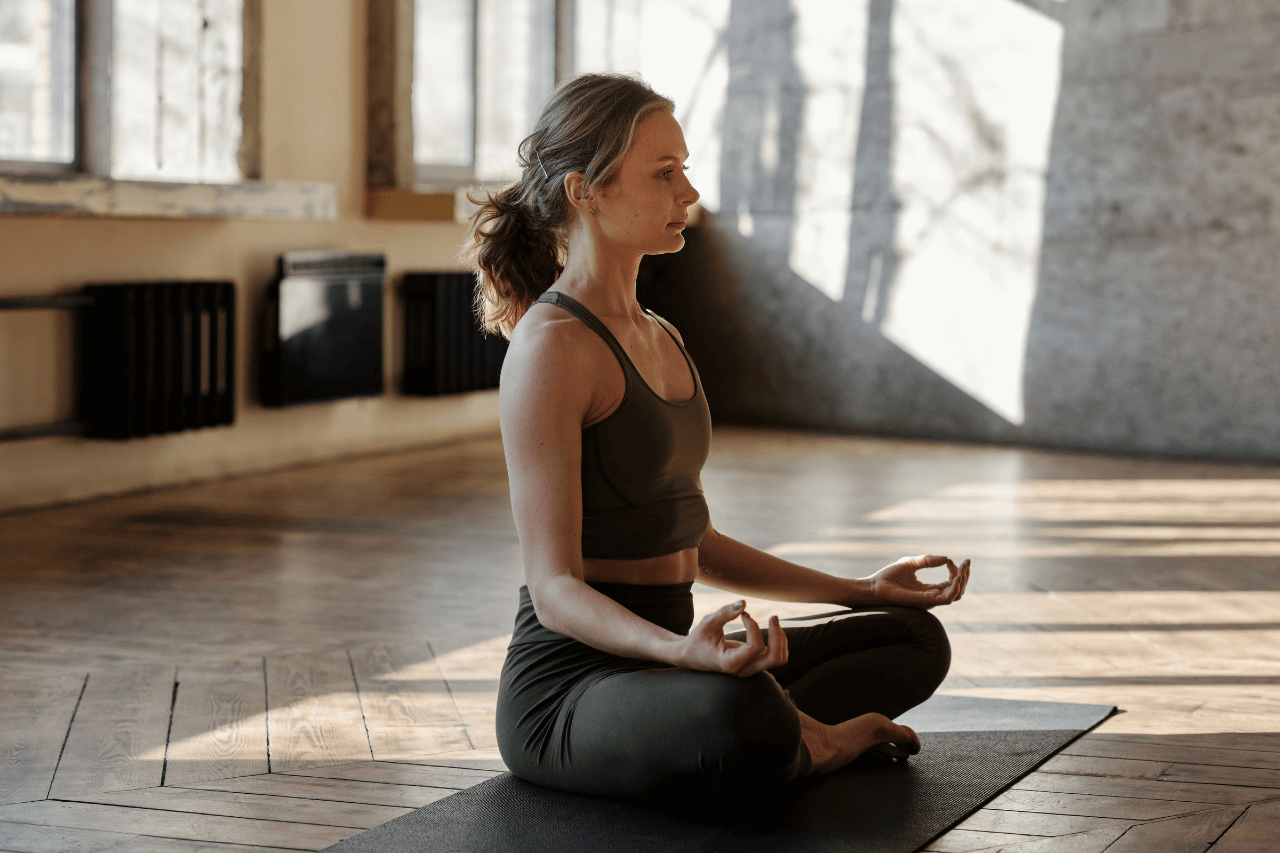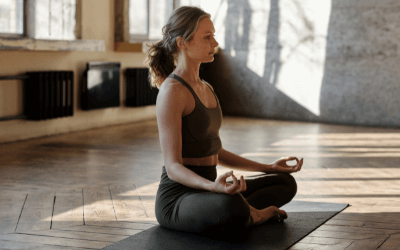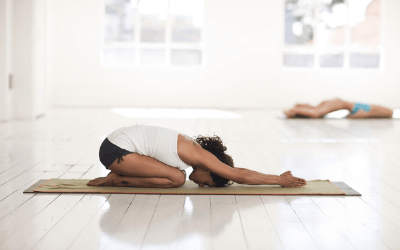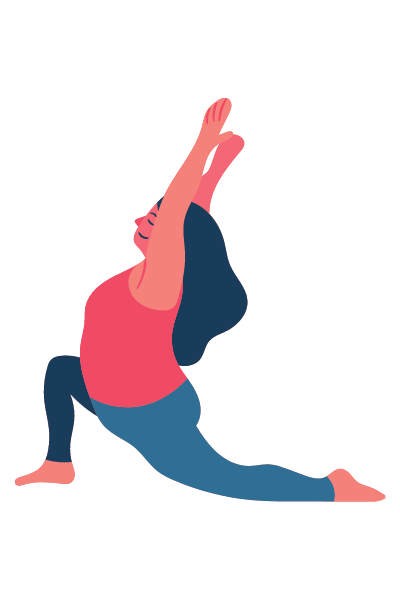
5 Yoga Poses To Improve Your Well-Being
Yoga is a great practice to add to your exercise routine as it provides many benefits. Not only does yoga provide physical benefits, like improving muscle tone, flexibility, and balance, but it also helps you relax and reduce stress. Research has shown that yoga can also reduce anxiety, depression, and chronic pain, improve sleep, and enhance overall well-being.
We’ve gathered six simple poses that can easily be added to your workout routines.
1. Easy Pose (Sukhasana)

How to do it: On your yoga mat, sit cross-legged with your hands resting on your knees, palms up. Keep your spine as straight as possible. Push your “sit bones” (the bones that are touching the ground) further into the floor. Close your eyes and take a deep breath.
Benefits: This pose can help to relieve stress. It’s a great pose for beginners to use as an assessment. By sitting on the floor, you can see and feel the external rotation of the legs. This pose also improves back flexibility.
2. Tree Pose (Vrksasana)

How to do it: Begin by standing straight. Put all your weight on your right leg, and lift your left leg by bending the knee. Swing your left knee out to the left, and press your left foot to the inner thigh of your right leg. Use your hands to place your foot if needed. Then bring your hands together in a prayer position either in front of your heart, or above your head. Try to keep balance for 30 seconds. Switch legs and try on the other side.
Benefits: Tree pose helps to stretch the entire length of the body, from the heels to the fingertips. This pose is a great way to improve your balance.
3. Child’s Pose (Balasana)

How to do it: From a tabletop position (on all fours), lower your butt toward your heels. Lower your shoulders and bring your forehead to the floor. Your arms can be stretched out in front of you, reaching for the top of the mat, or along your sides, palms facing up. Breathe in and relax.
Benefits: Child’s pose is a healing yoga pose that helps you relax and unwind. It is often used to rest after a difficult pose, as it awakens the connection between your breath and your body and calms your muscles. It gives you an opportunity to get grounded, and focus your mind onto your body by getting in tune with your breath. Child’s pose is a great way to take a break during your practice whenever you’re feeling tired or overwhelmed.
4. Low Lunge (Anjaneyasana)

How to do it: Kneel on your mat, then bend your right knee and place your right foot flat on the mat in front of you. Your left leg should now be pointing straight back, and your right leg bent at the knee. Your front knee should not be past your ankle–they should be aligned. Lengthen through your spine. Lift your arms above your head and reach up. Press into your right hip and knee. Square your hips by drawing your back hip forward to keep them aligned. Hold this position for 30 seconds, and switch legs.
Benefits: This pose is great for all levels, and helps lengthen your spine, open your hips, and build muscle strength. It also improves flexibility.
5. Baby Pigeon

How to do it: From a tabletop position, bring your right knee to touch your right wrist. Try to bring the top of your right foot as close as you can to the left wrist. If you can’t reach that far, rest your foot just under your groin area. Your right calf should be flat on the floor. Straighten your left leg out behind you (like in low lunge). Lower your upper body over your bent leg, either all the way to the floor or propped up on your elbows. Slowly inhale and exhale a few times before switching sides.
Benefits: This pose works to open up your hips and boost hip flexibility. This stretch may be challenging, but it releases the glutes and lower back to keep you strong and flexible.

